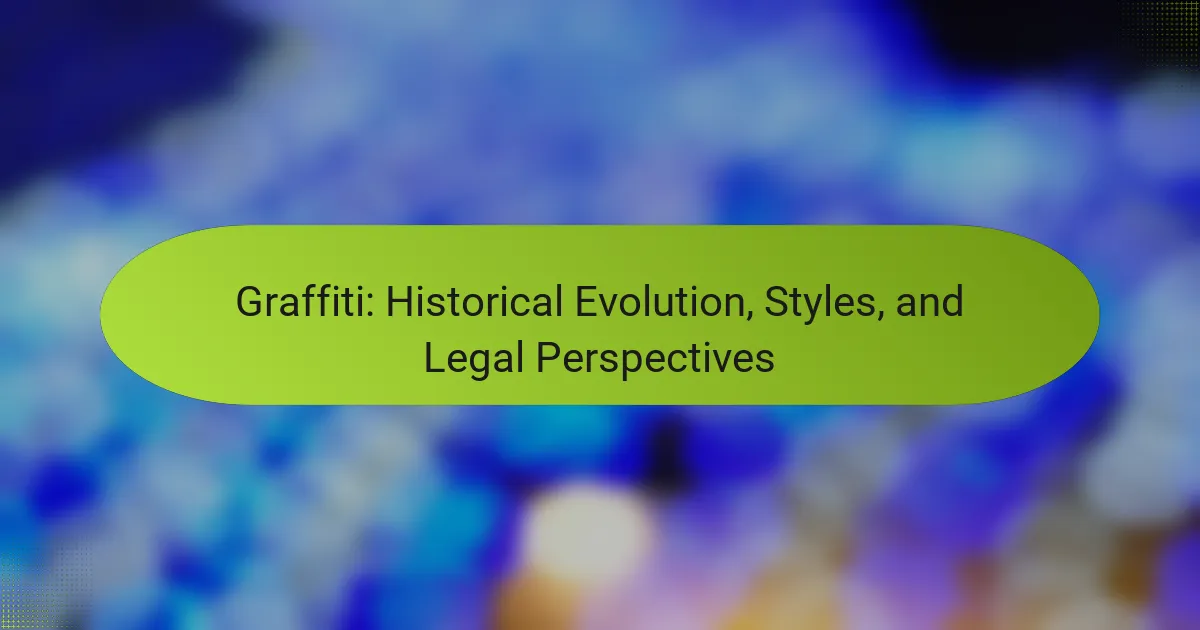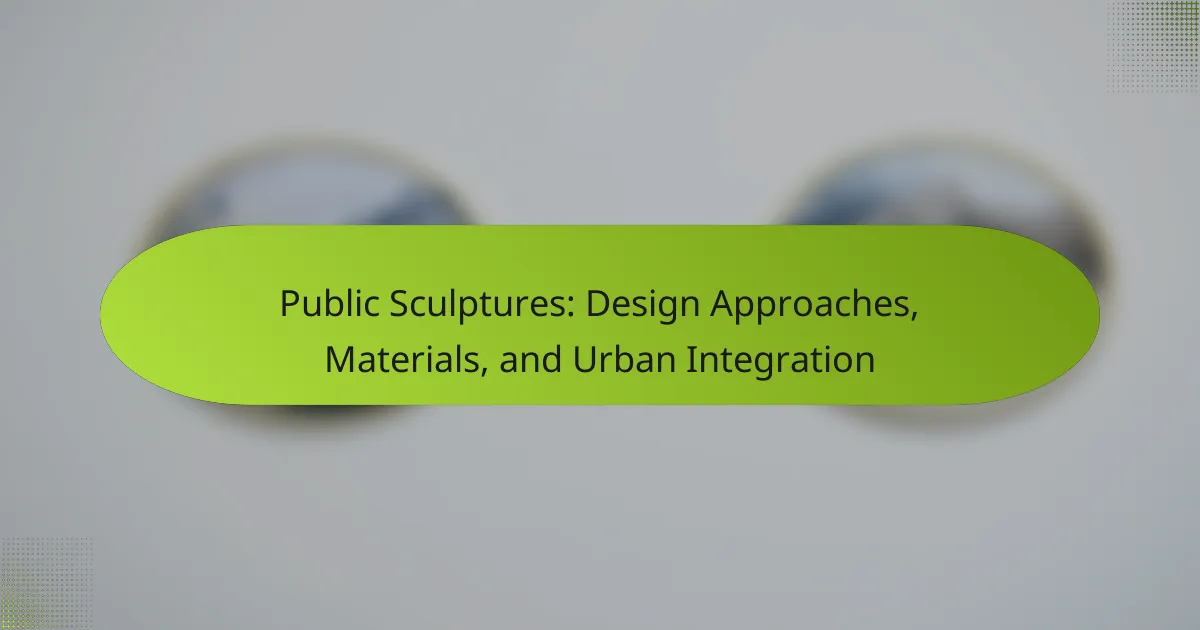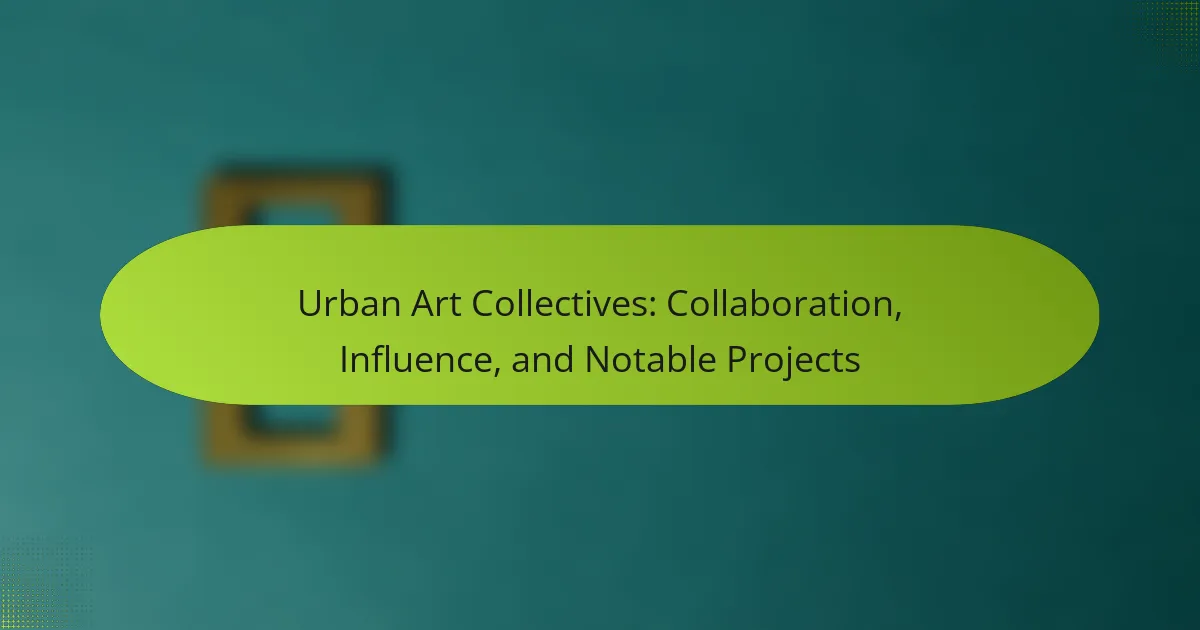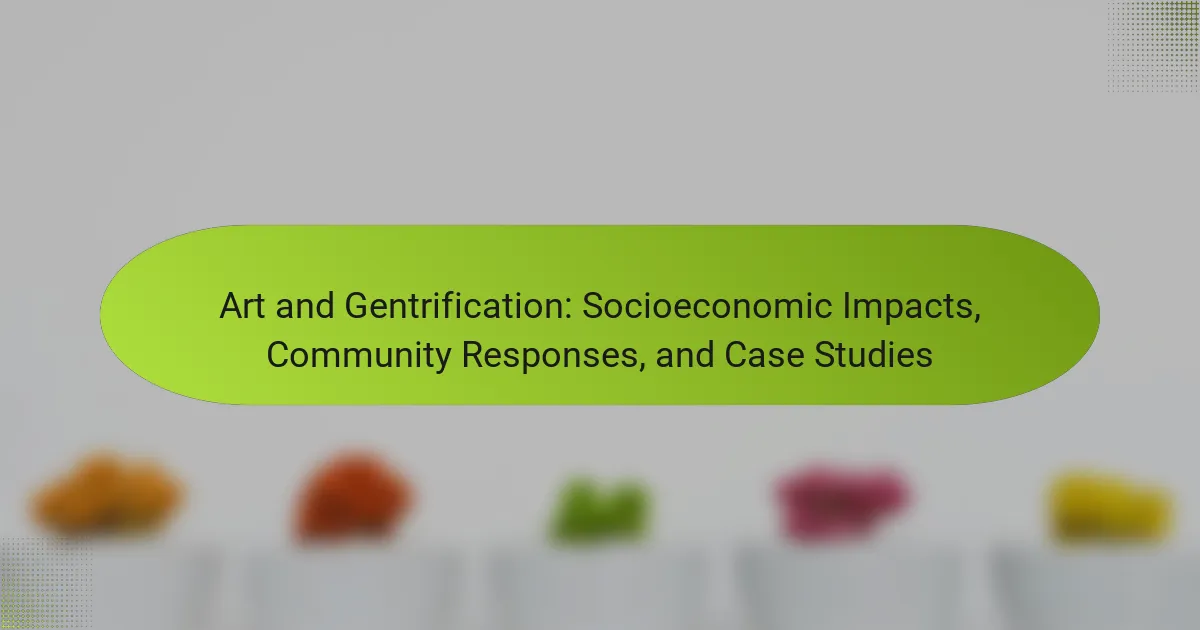Digital graffiti is revolutionizing urban art by merging technology with creativity. This article explores how augmented reality and projection mapping enhance artistic expression, the challenges artists face, and emerging techniques that redefine viewer engagement. Additionally, it examines the impact of digital graffiti on community involvement and social awareness.
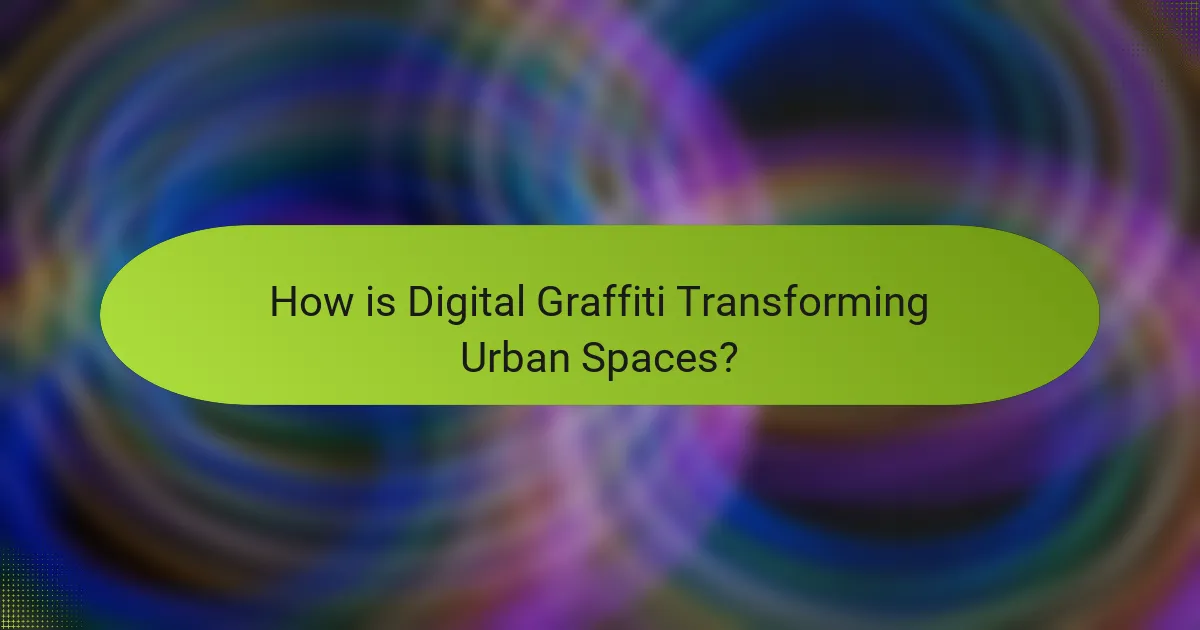
How is Digital Graffiti Transforming Urban Spaces?
Digital graffiti is transforming urban spaces by merging technology with artistic expression. This innovative form of art enhances public engagement and revitalizes neglected areas.
Digital graffiti employs augmented reality and projection mapping, allowing artists to create dynamic installations that change over time. This adaptability fosters a sense of community ownership and encourages local participation.
Moreover, digital graffiti can convey social messages, raising awareness about issues like climate change and inequality. By integrating technology, artists can reach wider audiences, turning urban landscapes into interactive galleries.
As a result, cities become vibrant cultural hubs, where art and technology coexist, enriching the urban experience for residents and visitors alike.
What Are the Key Technologies Behind Digital Graffiti?
Digital graffiti utilizes augmented reality, projection mapping, and interactive software to create immersive art experiences. These technologies enable artists to transform public spaces into dynamic canvases. Augmented reality overlays digital images onto the real world, allowing for interactive engagement. Projection mapping transforms surfaces into moving displays, enhancing visual storytelling. Interactive software enables real-time modifications, fostering collaboration and creativity. Together, these technologies redefine artistic expression in urban environments.
In What Ways Does Digital Graffiti Enhance Community Engagement?
Digital graffiti enhances community engagement by fostering creativity, encouraging collaboration, and promoting local culture. It transforms public spaces into interactive art galleries, inviting participation from residents.
Digital graffiti projects often involve local artists, enabling them to express community narratives. This collaboration strengthens social ties and builds a sense of identity.
Moreover, technology in digital graffiti allows for real-time feedback and interaction, increasing community involvement. For instance, augmented reality can enhance traditional murals, inviting viewers to engage through their devices.
Finally, digital graffiti can serve as a platform for social issues, sparking discussions and raising awareness within the community. This unique attribute makes it a powerful tool for change and connection.
Which Platforms Are Most Popular for Digital Graffiti Creation?
The most popular platforms for digital graffiti creation include Adobe Fresco, Procreate, and SketchBook. These platforms offer various tools for artists to create and share their work digitally. Adobe Fresco provides a wide range of brushes and a user-friendly interface, making it ideal for beginners and professionals alike. Procreate stands out for its intuitive design and extensive customization options, while SketchBook is favored for its simplicity and accessibility across devices. Each platform enhances artistic expression through innovative technology.
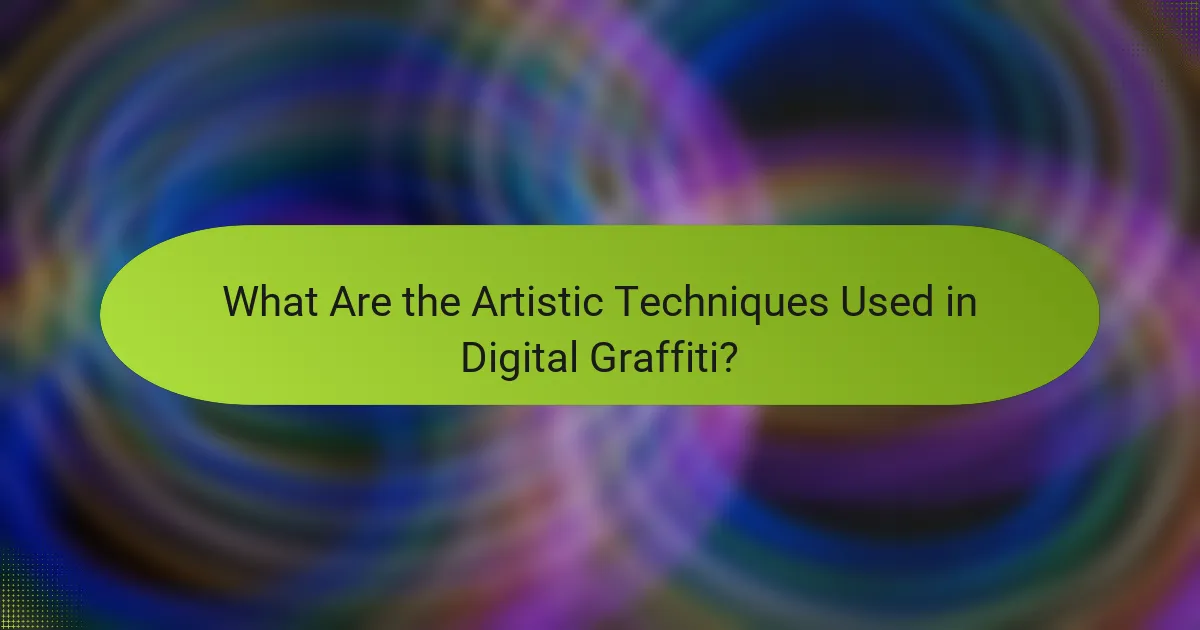
What Are the Artistic Techniques Used in Digital Graffiti?
Digital graffiti employs various artistic techniques that blend technology and creativity. Key techniques include digital painting, augmented reality, and projection mapping.
Digital painting allows artists to create vibrant murals using software tools. Augmented reality integrates digital elements into real-world environments, enhancing viewer interaction. Projection mapping transforms surfaces into dynamic canvases, showcasing animated art.
These techniques reflect innovation in artistic expression, merging traditional graffiti with modern technology. Each method offers unique attributes that redefine how art engages audiences in urban spaces.
How Do Artists Incorporate Augmented Reality in Their Work?
Artists incorporate augmented reality (AR) in their work by blending digital elements with physical spaces. This technology allows for interactive experiences that enhance viewer engagement. For instance, artists can project digital graffiti onto real-world surfaces, transforming urban landscapes into dynamic canvases. This innovation fosters a new form of artistic expression, merging creativity with technology. AR also enables artists to reach broader audiences through social media platforms, where users can share their experiences in real-time. As a result, augmented reality expands the possibilities of art, making it more accessible and immersive.
What Role Does Projection Mapping Play in Digital Graffiti?
Projection mapping enhances digital graffiti by transforming surfaces into dynamic canvases for artistic expression. This technology allows artists to project images and animations onto buildings and other structures, creating immersive experiences. By utilizing projection mapping, digital graffiti evolves from static images to interactive displays that engage viewers in real-time. This innovation fosters a unique blend of technology and creativity, enabling artists to push boundaries and explore new forms of storytelling. The ability to manipulate light and shadow adds depth and dimension, making each piece a one-of-a-kind experience.
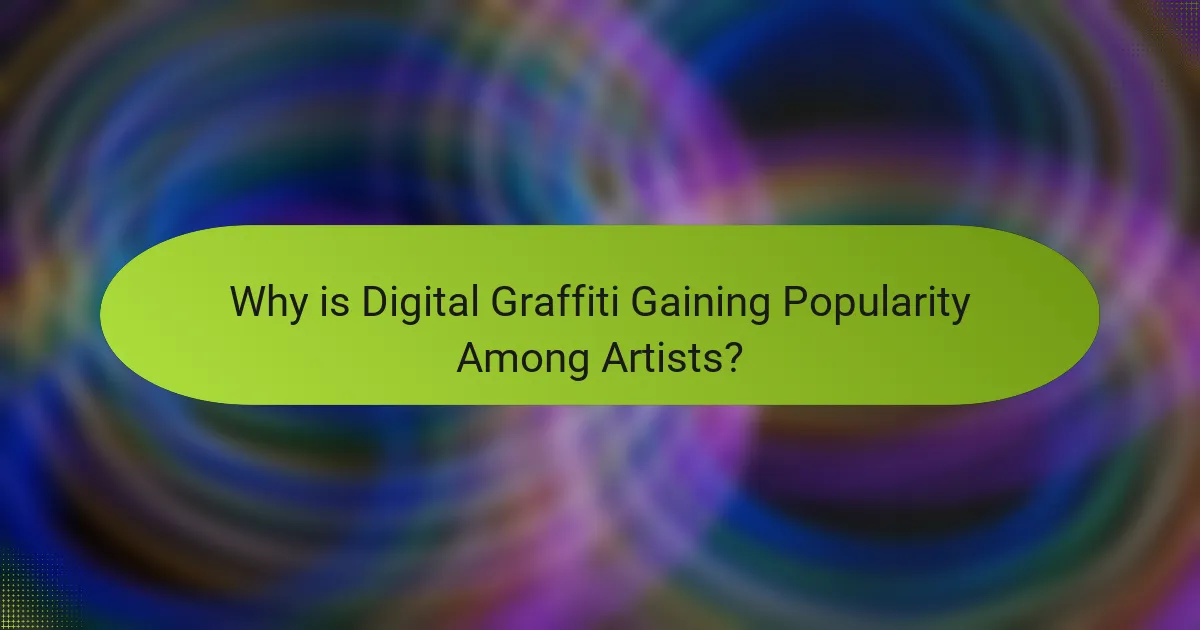
Why is Digital Graffiti Gaining Popularity Among Artists?
Digital graffiti is gaining popularity among artists due to its innovative blend of technology and creative expression. This art form allows artists to experiment with digital tools, creating immersive experiences that traditional graffiti cannot achieve. The accessibility of digital platforms enables a broader reach, allowing artists to showcase their work globally without physical limitations. Additionally, the ephemeral nature of digital graffiti appeals to many, as it can be easily modified or erased, offering a unique dynamic to artistic expression. As a result, the intersection of technology and art continues to attract a diverse range of creators.
What Are the Benefits of Using Digital Tools for Artistic Expression?
Digital tools enhance artistic expression by offering accessibility, versatility, and innovative techniques. Artists can experiment with colors, forms, and styles without traditional constraints. These tools enable collaboration across distances, fostering community engagement. Furthermore, digital platforms provide exposure to a wider audience, amplifying artists’ visibility. The unique attribute of instant feedback allows for rapid iterations, refining artistic ideas efficiently.
How Does Digital Graffiti Compare to Traditional Street Art?
Digital graffiti utilizes technology and innovation, offering unique forms of artistic expression compared to traditional street art. Digital graffiti allows for interactive and ephemeral creations, often using projection and augmented reality. In contrast, traditional street art relies on physical mediums such as spray paint and murals, creating permanent installations. Both forms share the goal of conveying messages and engaging audiences but differ significantly in their execution and permanence. Digital graffiti can reach wider audiences through online platforms, while traditional street art often fosters local community engagement.
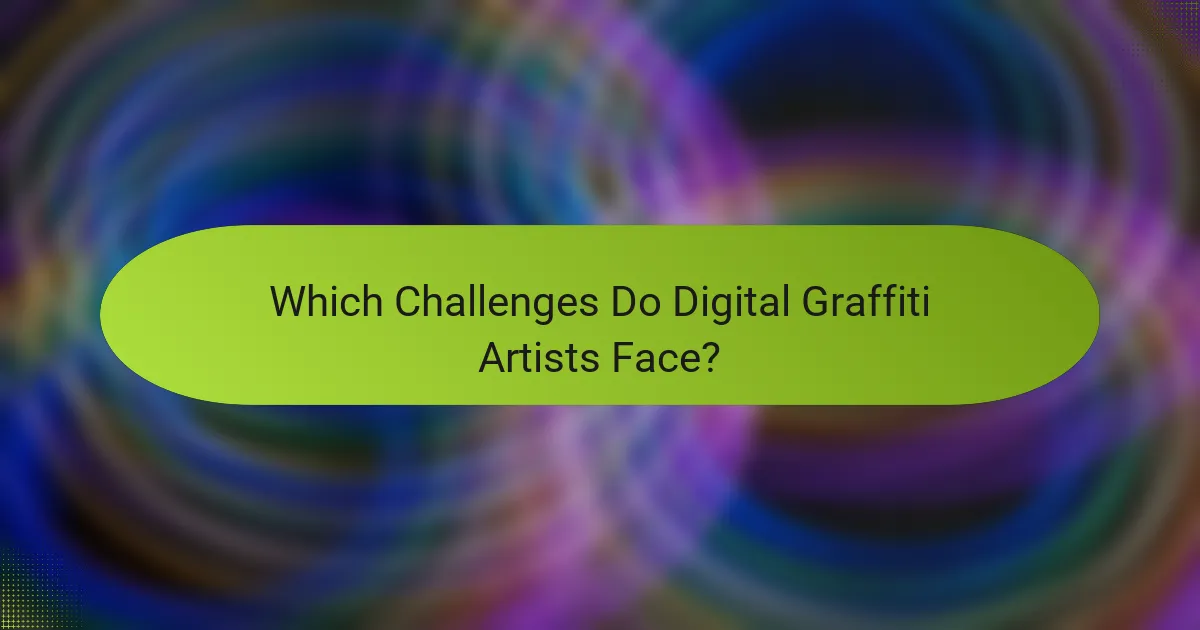
Which Challenges Do Digital Graffiti Artists Face?
Digital graffiti artists face numerous challenges that impact their work. Limited access to technology and tools can hinder creativity and expression. Legal issues, such as copyright and vandalism laws, pose significant risks. Additionally, gaining recognition in a competitive digital art landscape is difficult. Market acceptance and understanding of digital graffiti as a legitimate art form remain ongoing obstacles.
What Are the Legal Considerations Surrounding Digital Graffiti?
Digital graffiti raises several legal considerations, primarily around copyright, vandalism, and public space usage. Artists must navigate intellectual property laws to protect their work while ensuring they have permission to use digital platforms.
Key legal issues include the potential for copyright infringement if original artworks are altered without consent. Additionally, digital graffiti can be classified as vandalism if created on private property without authorization. Public spaces may have regulations regarding digital displays, impacting where and how artists can showcase their work.
Understanding these legal frameworks is essential for artists to avoid legal repercussions and to promote their creative expression responsibly.
How Do Artists Navigate Issues of Copyright and Ownership?
Artists navigate copyright and ownership issues by understanding legal frameworks and leveraging technology. Digital graffiti challenges traditional notions of ownership due to its ephemeral nature and accessibility. Artists often use digital platforms to share their work while protecting their rights through licenses and trademarks. The rise of blockchain technology offers innovative solutions for verifying ownership and ensuring artists receive fair compensation.

What Unique Attributes Set Digital Graffiti Apart from Other Art Forms?
Digital graffiti stands out through its innovative use of technology, allowing for interactive and immersive experiences. Unlike traditional art forms, it utilizes digital tools to create dynamic visuals that can be altered in real-time. This adaptability enhances artistic expression, enabling artists to respond to their environment and audience instantly. Furthermore, digital graffiti often integrates augmented reality, providing a unique viewing experience that traditional mediums cannot replicate. The ephemeral nature of this art form also sets it apart, as it can exist temporarily in public spaces, challenging conventional notions of permanence in art.
How Does Digital Graffiti Foster Collaboration Among Artists?
Digital graffiti fosters collaboration among artists by providing a shared digital space where creativity can flourish. This technology enables artists to connect, share ideas, and co-create in real time, regardless of geographical barriers.
The interactive nature of digital graffiti platforms encourages experimentation and innovation, as artists can build upon each other’s work. For instance, collaborative projects often emerge from these platforms, allowing multiple artists to contribute their unique styles and perspectives.
Moreover, digital graffiti often incorporates social media elements, facilitating broader engagement and feedback from the community. This feedback loop enhances artistic growth and nurtures a sense of belonging among artists.
In summary, digital graffiti not only serves as a canvas for artistic expression but also as a catalyst for collaboration, driving innovation and community among artists.
What Are Some Notable Projects or Installations in Digital Graffiti?
Notable projects in digital graffiti include “Graffiti Research Lab,” which uses open-source technology for urban art, and “The Digital Graffiti Festival,” showcasing innovative projections on buildings. “Tagtool” allows artists to create interactive digital graffiti, while “Projection Mapping” transforms spaces into dynamic canvases. These projects highlight the intersection of technology and artistic expression in urban environments.
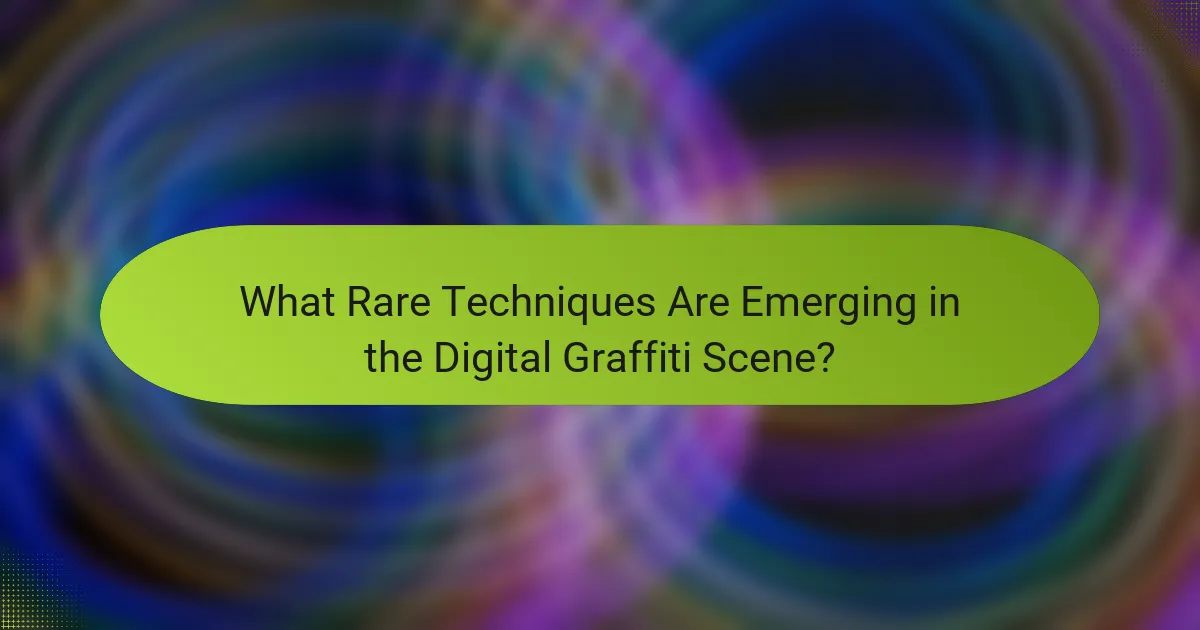
What Rare Techniques Are Emerging in the Digital Graffiti Scene?
Emerging techniques in the digital graffiti scene include augmented reality (AR), projection mapping, and interactive installations. These innovations enhance artistic expression and viewer engagement.
AR allows artists to overlay digital elements onto physical spaces, creating immersive experiences. Projection mapping transforms surfaces into dynamic canvases, enabling artists to showcase their work in new dimensions. Interactive installations invite audience participation, blurring the line between creator and viewer.
These techniques reflect the evolving nature of digital graffiti, pushing boundaries and redefining urban art. Each method showcases unique attributes, such as the ability to reach wider audiences and create site-specific narratives.
How Are Artists Experimenting with Interactive Digital Installations?
Artists are utilizing interactive digital installations to enhance engagement and creativity. They combine technology with artistic expression, creating immersive environments. For instance, digital graffiti allows users to paint virtually, transforming public spaces into interactive canvases. This innovation fosters collaboration and spontaneity, inviting audiences to participate actively. Unique attributes include real-time interaction and the ability to manipulate digital elements, making each experience distinct. As a result, artists are redefining the boundaries of traditional art forms, blending creativity with technology in unprecedented ways.
What Innovations Are Pushing the Boundaries of Digital Graffiti?
Innovations in digital graffiti are transforming artistic expression through augmented reality, interactive installations, and advanced projection mapping. These technologies enable artists to create immersive environments that engage viewers in new ways. For example, augmented reality apps allow users to experience digital graffiti in real-world settings, enhancing the connection between art and audience. Additionally, projection mapping techniques enable large-scale displays that bring static surfaces to life, offering dynamic visual narratives. These advancements push the boundaries of traditional graffiti, making it more accessible and interactive.

How Can Artists Maximize Their Impact with Digital Graffiti?
Artists can maximize their impact with digital graffiti by leveraging technology to enhance visibility and engagement. Utilizing augmented reality can create immersive experiences, allowing audiences to interact with art in innovative ways. Collaborating with tech companies can provide resources and platforms for wider distribution. Social media serves as a powerful tool for sharing artwork, enabling artists to reach global audiences instantly. Engaging in community projects fosters local connections and builds a supportive network. Finally, exploring various digital mediums allows for unique expressions and expands creative boundaries.
What Best Practices Should Artists Follow for Effective Digital Graffiti?
To create effective digital graffiti, artists should prioritize creativity, technical skill, and audience engagement. Utilizing high-quality software and hardware enhances the visual impact and precision of their work.
Artists should also explore innovative techniques, such as augmented reality, to create immersive experiences. Collaborating with other artists can lead to unique perspectives and fresh ideas.
Regularly sharing work on social media platforms helps build a following and encourages feedback. Understanding the legal implications of digital graffiti ensures that artists respect copyright and public space regulations.
Finally, continuous learning about emerging technologies keeps artists ahead in a rapidly evolving digital landscape.
Which Common Mistakes Should Be Avoided in Digital Graffiti Projects?
To avoid common mistakes in digital graffiti projects, focus on planning, technique, and audience engagement. Key errors include neglecting the project’s purpose, underestimating technical requirements, and failing to collaborate effectively.
1. Lack of clear objectives can lead to disorganized outcomes.
2. Ignoring software limitations may hinder artistic expression.
3. Overlooking audience interaction reduces impact and relevance.
4. Failing to test equipment can result in technical glitches.
5. Not considering the environment can diminish visibility and appreciation.
